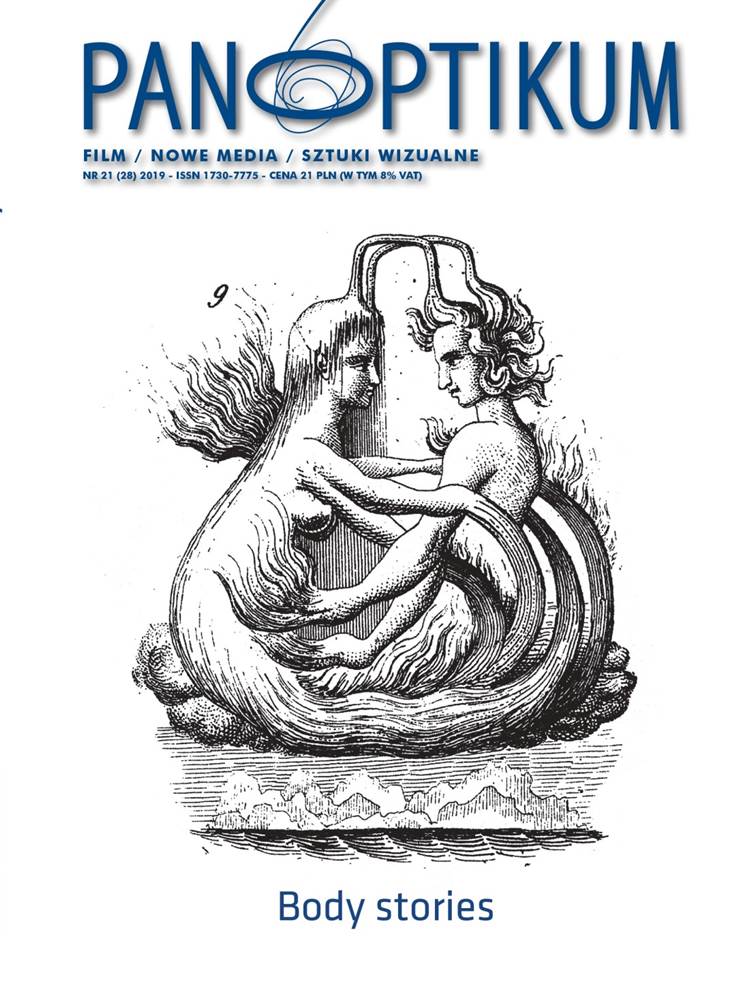Revelations of science: discussing images of prenatal development by Ernst Haeckel and Lennart Nilsson
DOI:
https://doi.org/10.26881/pan.2019.21.06Słowa kluczowe:
Ernst Haeckel, Lennart Nilsson, fetal images, embryo images, pregnancyAbstrakt
The paper discusses images of prenatal development created by Ernst Haeckel and Lennart Nilsson. Despite the obvious differences between a 19th-century biologist and philosopher of nature and a 20th-century photographer, substantial similarities exist in the way their respective narrations situate embryos and fetuses within the cultural realm. The paper traces the processes of creating the representations of stages of embryogenesis and the controversies surrounding them, analyzes the discursive frame within which the images are produced and function, and discusses their media specificity. It also examines the metaphysical ambitions surrounding the process of producing embryo- and fetal identities and the relation of these identities to the important cultural characteristics of their historical epochs.
Downloads
Bibliografia
Barthes R. (1982), The Photographic Message, (transl. Heath S.) [in:] A Barthes Reader, ed. Sontag S., New York: Hill and Wang.
Beauvoir S. de (2011), Second Sex, transl. Borde C., Malovany-Chevallier S., New York: Vintage Books.
Crary, J. (1990), Techniques of the Observer. On Vision and Modernity in the Nineteenth Century, Cambridge, MA: MIT Press.
Duden B. (1993), Perspectives on Pregnancy and the Unborn, (transl. Hoinacki L.) Cam- bridge, MA: Harvard University Press.
Duden B. (1999), The Fetus on the “Farther Shore”. Toward a History of the Unborn [in:] Fetal Subjects, Feminist Positions, ed. Morgan L. M., Michaels M., Philadelphia: University of Pennsylvania Press.
Franklin S., Lury C., Stacey J. (2000), Global Nature, Global Culture, London: SAGE Publications.
Graves E. (1966),: A Woman on Her Way to a Miracle, photographed by Lennart Nilsson, “Life”, July 22 1966.
Haber F. (1972), The Darwinian Revolution in the Concept of Time [in:] The Study of Time, ed. Fraser J. T., Haber F. C., Müller G. H., Berlin-Heidelberg: Springer-Verlag
Haeckel E. (1909), Natürliche Schöpfungsgeschichte. Gemeinverständliche wissenschaftliche Vorträge über die Entwicklungslehre im allgemeinen und diejenige von Darwin, Goethe und Lamarck im besonderen, Berlin: Druck und Verlag von Georg Reimer, 1909.
Haeckel E. (1876), The history of creation, or, The development of the earth and its inhabit- ants by the action of natural causes: doctrine of evolution in general, and of that of Darwin, Goethe, and Lamarck in particular, (transl. Lankaster E. R.), London: Henry S. King. Accessible through: https://archive.org/details/historyofcreatio76hist/page/n337, (accessed 2019-09-30).
Haeckel E. (1906), Monizm jako węzeł między religią a wiedzą (credo przyrodnika), (transl. Rosenfeld M.), Kraków: Drukarnia Narodowa.
Hoffman R. A. (2011), How to See the Horror: The Hostile Fetus in “Rosemary’s Baby” and “Alien”, “Literature Interpretation Theory”, Volume 22 Issue 3, DOI: 10.1080/10436928.2011.596386.
Hopwood N. (2012), “A Marble Embryo: Meanings of a Portrait from 1900”, History Workshop Journal, Volume 73, Issue 1, Spring 2012, DOI:10.1093/hwj/dbq051.
Hopwood N. (2015), Haeckel’s Embryos. Images, Evolution and Fraud. Chicago: The University of Chicago Press.
Hunt G. P., A Remarkable Photographic Feat (Editor’s Note), “Life”, Vol. 58 No 17 April 30 1965.
Jansen Ch. (2019), Fetus 18 Weeks: the greatest photograph of the 20th century? The Guardian https://www.theguardian.com/artanddesign/2019/nov/18/foetus-images-lennart- nilsson-photojournalist.
Jülich S. (2015), The Making of a Best-Selling Book on Reproduction: Lennart Nilsson’s A Child Is Born, Bulletin of the History of Medicine, DOI:10.1353/bhm.2015.0091.
Kant I. (2004), Krytyka władzy sądzenia, (transl. Gałecki J.), Warszawa: PWN.
Kowalczyk I. (2014) Abiekt [in:] Encyklopedia gender. Płeć w kulturze, ed. Rudaś-Grodzka M. et al., Warszawa: Wydawnictwo Czarna Owca.
Lochlann Jain S. (1998), “Mysterious Delicacies and Ambiguous Agents: Lennart Nilsson” National Geographic, Configurations, Vol. 6 No 3, DOI: 10.1353/con.1998.0027.
Nilsson L., Ingelman-Sundberg A., Wirsén C. (1985), Życie przed narodzeniem. Foto- dokumentacja rozwoju życia ludzkiego w łonie matki – Praktyczne porady dla przyszłych matek, translated from Croatian Sychowska-Kavedžija, Warszawa: Instytut Rodziny, (trans. J. Sychowska-Kavedžija).
Nilsson L., Hamberger L. (1995), Rodzi się dziecko, Warszawa: Wydawnictwo Naukowe PWN, (trans. J. Lipka), from Hamberger L., Nilsson L., A Child Is Born 1990.
Newman K. (1996), Fetal Positions. Individualism, Science, Visuality, Stanford CA: Stanford University Press.
Panofsky E. (1991), Perspective as Symbolic Form, (transl. Wood Ch. G.), New York: Zone Books.
Petchesky, R. P. (1987), Fetal images: The power of visual culture in the politics of reproduction, Feminist Studies, 13 (2).
Radkowska-Walkowicz, M. (2013), Doświadczenie in vitro. Niepłodność i nowe technologie reprodukcyjne w perspektywie antropologicznej, Warszawa: Wydawnictwa Uniwersytetu Warszawskiego.
Richards R. J. (2009), Haeckel’s Embryos: Fraud not proven, “Biology and Philosophy” 24 (1), DOI: 10.1007/s10539-008-9140-z.
Rosenfeld A. (1965), Drama of Life before Birth, photographed by Lennart Nilsson, “Life”, Vol. 58 No 17 April 30.
Sawchuk K. (2000), Biotourism, Fantastic Voyage and Sublime Inner Space [in:] Wild Science. Reading Feminism Medicine and the Media, ed. Marchessault J., Sawchuk K., London: Routledge.
Sontag S. (1977), On photography, New York: Farrah, Strauss and Giroux.
Stabile, C. (1998), Shooting the Mother. Fetal Photography and the Politics of Disappearance [in:] Treichler P. A., Cartwright L., Penley C. (ed.), The Visible Woman. Imaging Technologies, Gender and Science, New York: New York University Press.
Stachowicz J. (2018), Ciało jako pole bitwy, ciało-krajobraz. Cielesna geopolityka zimnej wojny w filmie Fantastyczna podróż [in:] Kmak A., Kwiatkowska P., Szewczyk M. (ed.) Cięcie ciał. Ruchome obrazy, Warszawa: Fundacja Mammal.
Stormer N. (Spring 2008), Looking in Wonder: Prenatal Sublimity and the Commonplace “Life”, Signs, Vol. 33, No. 3, DOI: 10.1086/523816.
Youngblood G. (1970), Expanded Cinema, New York: A Dutton Paperback.

 Uniwersyteckie Czasopisma Naukowe
Uniwersyteckie Czasopisma Naukowe









